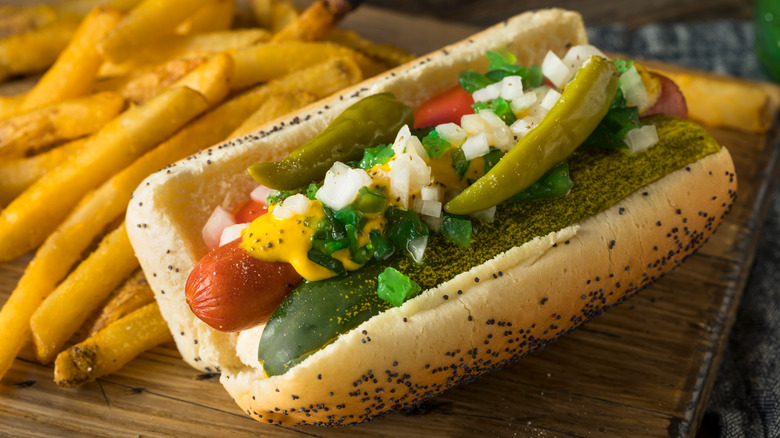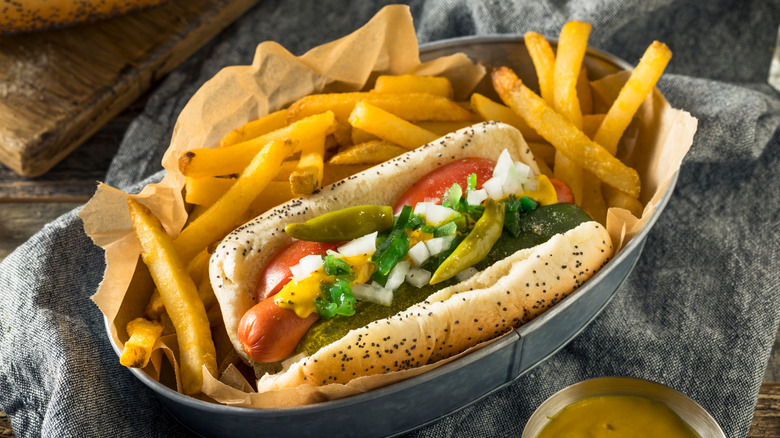What Makes Chicago-Style Hot Dogs Unique?
Around the world, sausages — also known as wieners, weenies, frankfurters, and many other names (via Delighted Cooking) — are a cornerstone of local cuisines. Spanish chorizo, German bratwurst, and Argentinian longaniza are all sausages and have historically been prepared across the globe as an economical and, according to Spoon University, are a tasty way to use up less desired parts of a butchered animal, ranging from the intestines to the fat and organ meats. Of course, a much-loved version of a sausage is the classic hot dog. Epicurious notes that it is typically made from beef, pork, or a mix of the two and is a usual suspect on the grill when summertime rolls around.
Most of us have eaten a basic grilled hot dog stuffed into a bun and squirted with ketchup or mustard and perhaps a bit of relish, but did you know that across the United States, there are many regional variations of hot dogs that boast differing preparations and a wide range of toppings? According to the National Hot Dog and Sausage Council, the National Hot Dog & Sausage Council, the country boasts close to 20 specialized regional hot dogs, ranging from a classic New York City style with steamed onions and deli mustard to a Southwestern Sonoran dog that's wrapped in bacon and swaddled with pinto beans, salsa, and shredded cheese.
Another famous frankfurter is the Chicago dog, and if you've never eaten one, you might be wondering what sets it apart from the pack — so to speak.
A Chicago dog is dragged through the garden
If you love eating meat, but also happen to adore vegetables, a Chicago-style hot dog just might be the choice for you. According to Forbes, this hot dog features an all-beef frank spiced with garlic, paprika, and other seasonings. It's nestled into a steamed poppy seed bun before being topped with a slew of fresh and pickled vegetables ranging from onions and tomatoes to peppers and pickles. When ordering a Chicago dog, it's common to ask for it "dragged through the garden," or loaded up with all those tasty veggies (via Forbes). Other traditional toppings include yellow mustard, celery salt, and bright green pickle relish that lends quite a bit of sweetness to the dog.
According to Forbes, the Chicago dog's origins lie with German immigrants, who at the end of the 19th century, made up a full 25% percent of the city's population. These immigrants, many of whom worked as butchers in the city, brought the Vienna style beef sausage with them. Also popular during the Depression, it cost a nickel. Afterward, it grew even more popular.
So if you're ever in the Chicago area and craving a wiener, be on the lookout for this veggie-laden beef frankfurter — a true cultural touchstone of the city. Just keep in mind that you'll have to shell out a bit more than a nickel for one these days.

